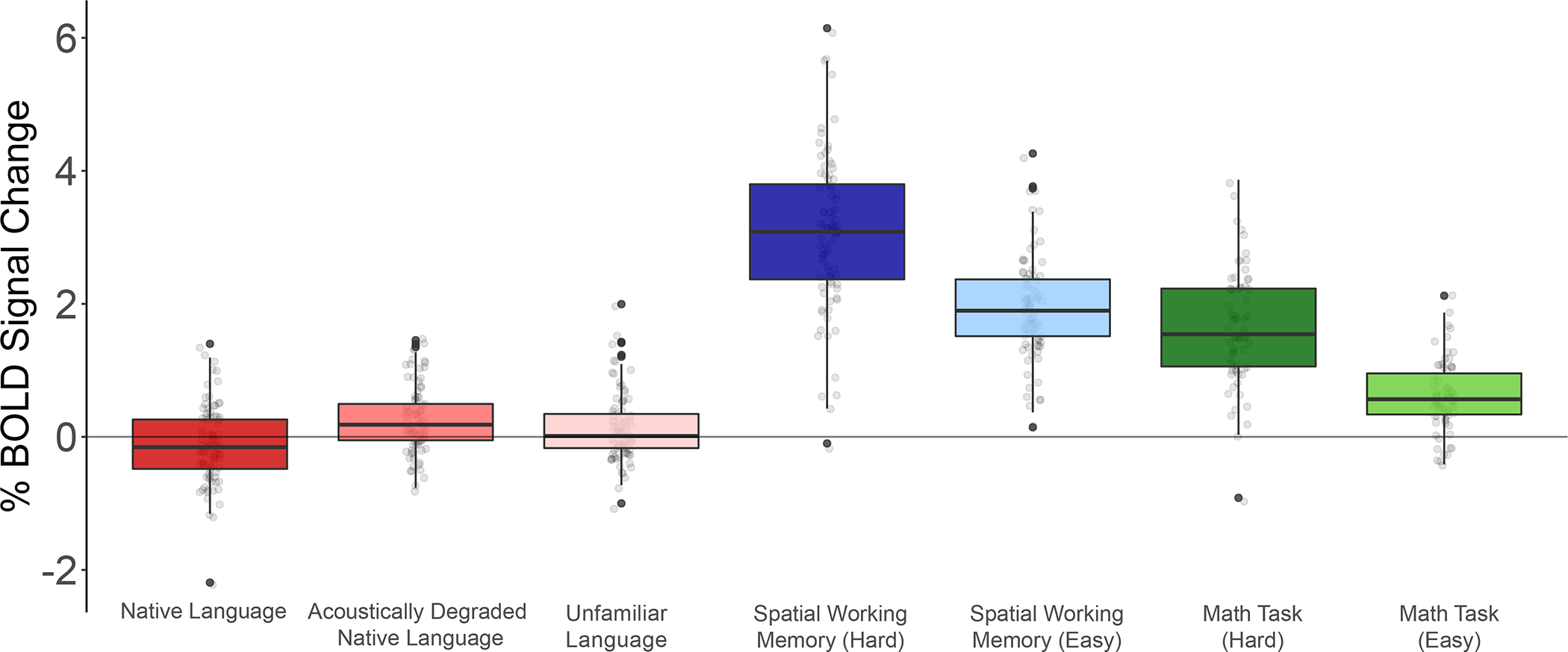Extended Data Fig. 9.

Responses in the domain-general Multiple Demand network to the conditions of the Alice localizer task, the spatial working memory task, and the math task. Percent BOLD signal change across the domain-general Multiple Demand (MD) network15,52 functional ROIs for the three language conditions of the Alice localizer task (Native language, Acoustically degraded native language, and Unfamiliar language), the hard and easy conditions of the spatial working memory (WM) task, and the hard and easy conditions of the math task. The dots correspond to languages (n=45 except for the Math Task, where n=41). Box plots include the first quartile (lower hinge), third quartile (upper hinge), and median (central line); upper and lower whiskers extend from the hinges to the largest value no further than 1.5 times the inter-quartile range; darker-colored dots correspond to outlier data points. As in the main analyses (Figure 3c), the individual MD fROIs were defined by the Hard>Easy contrast in the spatial WM task (see 54 for evidence that other Hard>Easy contrasts activate similar areas). As expected given past worke.g., 54, the MD fROIs show strong responses to both the spatial WM task and the math task, with stronger responses to the harder condition in each (3.05 vs. 1.93 for the spatial WM task, t(44)=23.1, p<0.001; and 1.68 vs. 0.62 for the math task, t(40)=8.87, p<0.001). These robust responses in the MD network suggest that the lack of responses to the spatial WM and math tasks in the language areas can be meaningfully interpreted. Furthermore, in line with past worke.g., 58–60, MD fROIs show a stronger response to the acoustically degraded condition than the native language condition (0.26 vs. −0.10, t(44)=4.92, p<0.01), and to the unfamiliar language condition than the native language condition (0.15 vs. −0.10, t(44)=4.96, p<0.01). All t-tests were two-tailed with no adjustment for multiple comparisons.
